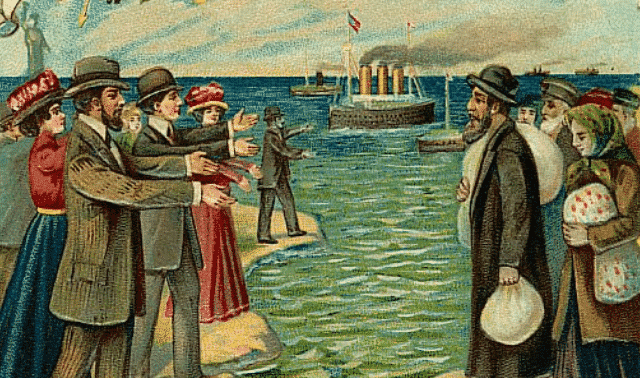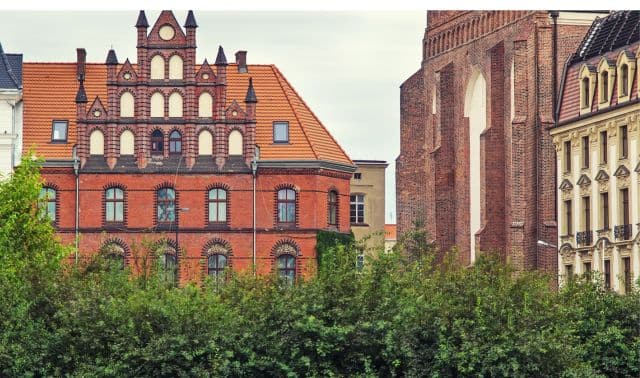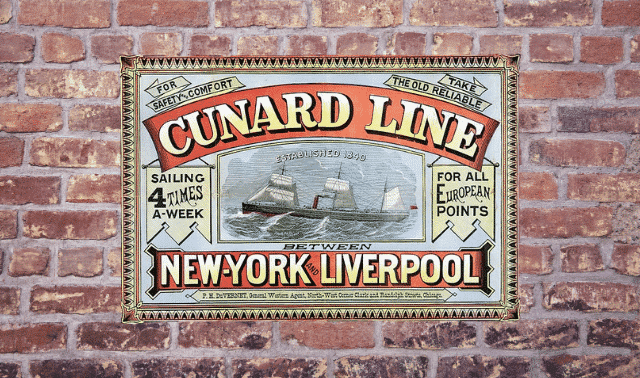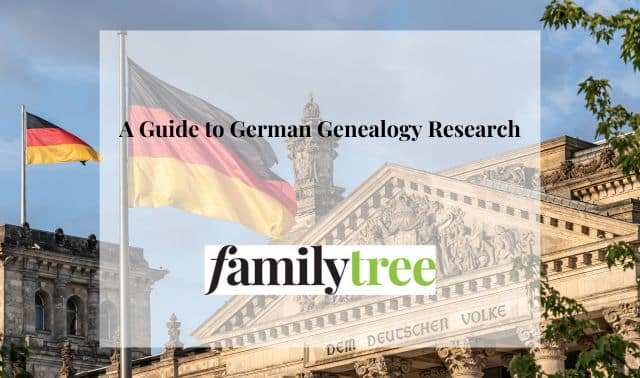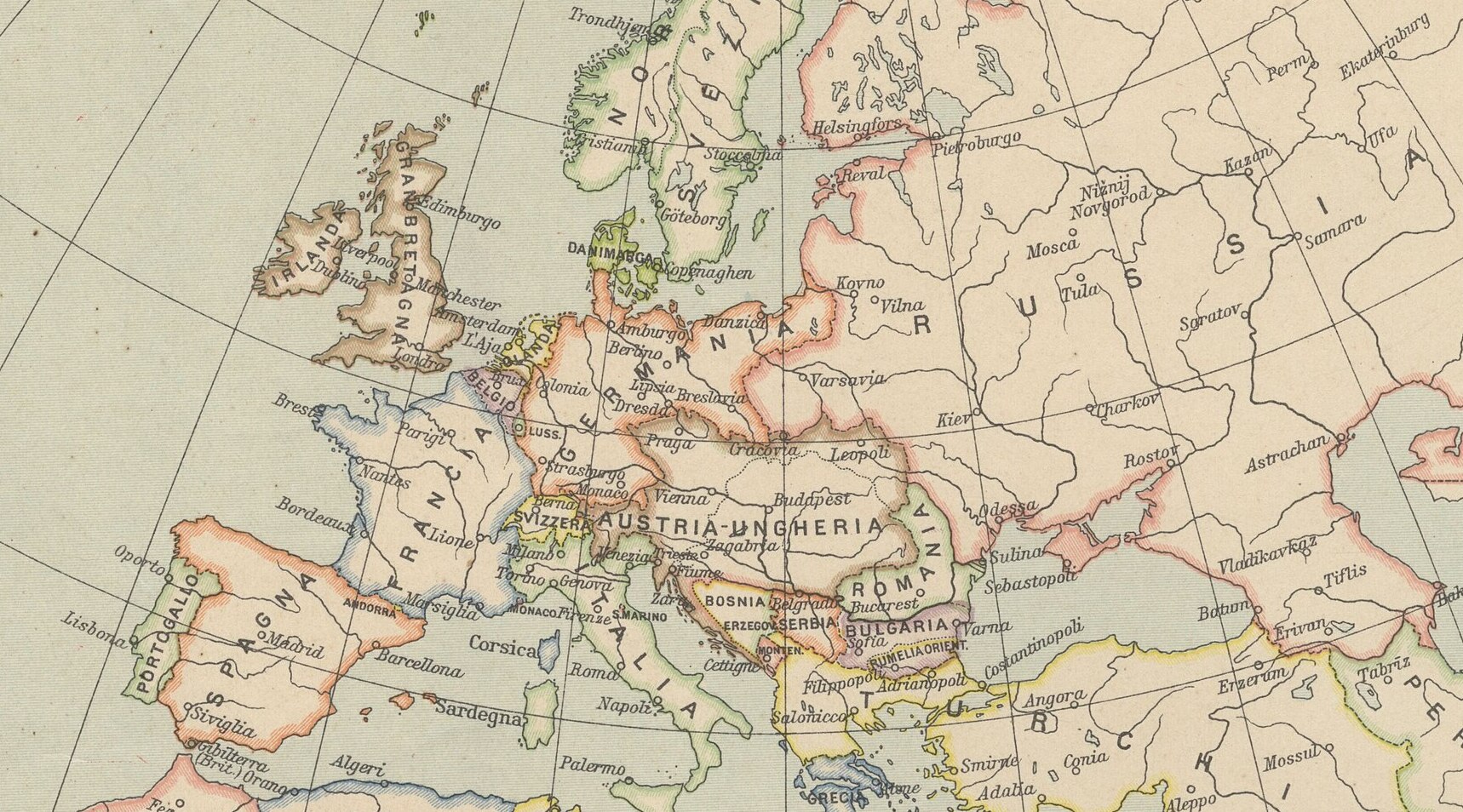
Before he came to America in 1876, my great-grand father Gustav Fryxell lived a life of such hardship in rural Sweden chat I can barely imagine it. One year, the family’s lone cow starved to death. Another time, young Gustav lost his coat, and the family was too poor to buy a replacement, so he had to stay indoors the whole long, dark Swedish winter. No wonder he and his brother decided to seek a better life on the other side of the Atlantic.
On the other half of my family, the connection to Europe is much further back in history, and most of my mother’s ancestors were pretty well off in the old country — in their case, England. My seventh-great-grandfather Francis Stanfield, for example, lived in Cheshire until inspired to join William Penn’s Quaker migration to America. When Francis, his wife, Grace, and six children boarded the Endeavor for the New World in 1683, they were accompanied by nine servants.
Whether your ancestors on the opposite side of the “pond” were rich or poor — or a mixture of both, like mine — and wherever they came from, learning about their world is the next great adventure in exploring your family tree. For some researchers, making the link to the old country is a matter of just a few generations, maybe a chat with a grandparent whose parents were the family’s immigrants. Other family historians must delve back hundreds of years and overcome many wrong turns before they can leap from American to European research.
Though America today is more diverse than ever before, doing genealogy in the “old country” still most often means researching European roots. Part of that is simply cultural, in that families with European heritage typically have been here long enough to grow from an eagerness to be “Americanized” to a curiosity about what their ancestors left behind. But it’s also a matter of numbers: More than 60 percent of Americans in the 2000 census claimed ancestry from the 23 largest European ethnic groups. And many of those, like me, are “mongrels,” combining heritages from two or more nations whose citizens never would have been together in Europe. Some 84 million Americans report ancestry from two or more ethnic groups.
The most common European ancestries, according to the US census, are German (42.8 million in 2000), Irish (30.5 million), English (24.5 million) and Italian (15.7 million). Other significant populations in America include Polish (9 million), French (8.3 million), Scottish (4.9 million), Dutch (4.5 million), Norwegian (4.5 million), Scots-Irish (4.3 million) and Swedish (4 million). But the census collected data on more than 50 different European ancestries, including Cypriot (7,663 in the 2000 count), Carpatho Rusyn (6,683) and 2,265 people who claimed ancestry from the now-defunct Soviet Union.
Whatever your European roots, researching your ancestors “over there” can be a jarring change from the familiar patterns of US genealogy. Suddenly, you have a whole new gazetteer of place names to deal with. Unless you have only British Isles ancestors, you’ll confront a language barrier. What seemed so simple in an American library or courthouse becomes bewildering in European places with different record-keeping traditions. But the answers about your European ancestors are there — if you know where to look. Actually, European records are often more complete and accessible than those in America, and your ancestral homeland may keep in-depth records of types typically overlooked (such as church records) or simply unknown here (such as notary records). And, no, you don’t have to cross the Atlantic yourself to get started on your European roots — just follow our tips.
Placing Your Ancestors
The most important clue you need to make headway in finding your European heritage — besides your ancestors’ names, of course — is where your family came from. If you’re starting to eye your overseas ancestry, it’s probably because you’ve discovered, at long last, that your great-grandfather came from Poland, say, or your third-great-grandparents were Irish. Sorry, but that’s not quite enough: you need to know where in Poland or Ireland your family originated. That’s the key that can unlock the puzzles of your European roots.
Sometimes, narrowing down the exact place your family lived in Europe is relatively easy. Start by quizzing your older relatives for the name of a town or a church parish. Examine old letters and other documents for clues. I was stumped on the origins of one branch of my father’s tree until I obtained the family Bible from a second cousin, and realized that the inscrutable handwriting after my great-grandmother’s name and birth date wasn’t just some Swedish pleasantry, but the name of her village. It could have been Hackvard or Hakvad or anything between (though probably not Harvard, which is what the scrawls sort of resembled). I plugged every variation I could think of into the online Swedish Gazetteer until I got a “hit” with Hackvad.
You can find help deciphering the foreign words in your family’s old documents (and, later, in microfilmed records) in the genealogical word lists online at FamilySearch (click the Search tab and then Records). Learning key terms such as the words for born, married and died, plus words like of, will come in handy. Other translation tools can be found online at Babelfish and Google Translate. You’ll probably want to invest in a dictionary or phrase hook for the languages of the countries you’re researching—or consult the links at dictionary.reference.com.
Of course, good maps and a gazetteer are essentials, too. If you’re not lucky enough to find a Web site devoted to your country of origin, as I did, try the Perry-Castañeda Library Map Collection and the Global Gazetteer.
A few Web sites also can help you pinpoint your ancestral village. If your ancestor entered America via Ellis Island between 1892 and 1924, for example, you can search the database of 65 million immigrantion records at the Ellis Island Foundation. When you click on the results, the passenger list record will typically give the person’s place of residence back in the old country. If you descend from Catherine Rigney, for example, who was 27 years old when she came through Ellis Island May 30, 1910, a quick search and a few clicks will tell you that Catherine came from Mountrath, Ireland.
Still stuck? You need to try the whole genealogical bag of tricks that got you to this point in the first place. Census records, alas, will just tell you the country of origin. But birth and death certificates, US church records and marriage licenses all could have the magic place information you need.
From Europe to Utah to You
Once you’ve identified a specific locale in Europe to research, there’s no need to run out and renew your passport. FamilySearch is the best place to start exploring Europe. Since 1938, representatives of the Church of Jesus Christ of Latter-day Saints’ FamilySearch Library in Salt Lake City have crisscrossed the continent, microfilming records and more recently digitizing these records for access online.
Start tapping the FamilySearch Library’s millions of microfilm rolls by searching its online catalog (from the FamilySearch home page, click the Search tab, then Catalog). Simply select Place Search, and then enter as much information as you know about your ancestral village.
Suppose your Italian ancestors came from the town of Mariano, for example: You should enter Mariano in the blank for Place. But if you also know that Mariano is in the commune (a small administrative district) of Parma, enter that along with the place name. That will keep you from being confused by records from Mariano Comense in Como, Marianopoli in Caltanissetta or even Márianosztra, which is in Hungary.
Conversely, once you’ve zeroed in on the records for your target village, click the “See: [related place]” (in this case “See: Part Of Emilia-Romagna, Parma, Pellegrino”) button to make sure you haven’t focused your search too finely. In our Italian example, you’d find church records from two parishes in Mariano, one dating from 1694 to 1923. But if you backed up a level to Pellegrino and then to Parma you’d also find censuses, military records, civil registrations (what vital records are typically called in European countries) and even on local nobility.
Having trouble making sense of your findings? The FamilySearch Wiki also has research guides on many European countries, from Denmark to Wales. These are ideal orientations to the types of records you can expect to find and where they might be archived if the FamilySearch hasn’t microfilmed them or if they are not digitized on the website.
Other Sites and Resources
The globe-spanning Internet, too, comes in even more handy for European research than for stateside genealogy. Many European countries’ records are online, saving you not only stamps and International Reply Coupons, but also the frustration of knowing your ancestors must be there somewhere—but where? Indexed databases make combing through thousands of entries a snap.
For example, FamilySearch offers a transcription of the 1881 British census. The subscription site Ancestry.com has an entire UK & Ireland Records Collection. But these offerings are just the tip of the British Isles iceberg of online data.
Other options include the National Archives; ScotlandsPeople, covering millions of names beginning in 1553; and the Scottish Archive Network, especially its 1500 to 1875 wills database (also available on ScotlandsPeople). Another commercial site is worth noting for British Isles research: Find My Past, with a variety of free and pay databases covering England, Ireland and Scotland.
But researchers on the continent can find plenty of databases to jump-start their research, too. FamilySearch has a variety of free Scandinavian vital records databases, for example. Swedish researchers can use ArkivDigital, a subscription site (2,095 Swedish Krona a year/about $209 USD a year) to access Swedish historical documents such as church records, court records, census/tax records, and more.
Next door, Norway’s Digital Archive is a trove of census transcriptions (1660, 1801, 1865, 1875, 1900), probate indexes (1677 to 1856) and more, all free. And you can start finding your French roots in Geneactes’ Web databases of French civil records, including marriage records that are searchable by keyword, name or place.
Emigrant information sometimes unlocks clues to your ancestors’ lives before they headed for America, and these lists—sort of the flip side of the Ellis Island database—are increasingly coming online. The Hamburg Link to Your Roots project resulted in searchable databases in which you can do searches of emigrants via Hamburg—a key departure port not only for Germans, but also for those from neighboring countries.
Other useful sites cover a whole range of nationalities. If you have Jewish roots in Europe, for example, try Avotaynu, whose site includes the Consolidated Jewish Surname Index of nearly 700,000 names in 40-plus different databases, and JewishGen, which includes a Family Finder of over 500,000 surnames and towns, plus databases on shtetl communities. The Foundation for East European Family History Studies covers over 20 countries and dozens or ethnic groups, and includes links to organizations associated with the federation.
You’ll also want to explore the pages of sites categorized by country on Cyndi’s List, where you’ll discover over 200 links just for Austria, for example, almost 140 for Greece and close to 1,400 for German genealogy.
Finally, if you’re familiar with USGen Web, the vital all-volunteer project that’s putting American records of all sorts online, state by state, you’ll want to check out its globally ambitious cousin, WorldGenWeb. Admittedly, WorldGenWeb is more of a mixed bag, isn’t as data-rich and doesn’t always cater to us English-language users. But its country pages can be handy jumping-off places for online research, and some—such as Poland GenWeb and Netherlands GenWeb—are among the best sites of their kind.
Connecting With European Cousins
The Internet also lets you share discoveries with distant relatives back in the old country and ask for long-distance research help from genealogists who are thousands of miles closer to archives than you are. Take advantage of the country-specific forums on such sites as GenForum and Ancestry.com’s Message Boards, as well as those sites’ surname boards for your European names. There are also numerous genealogy groups that you can join on Facebook.
One day recently, for instance, I checked my e-mail and found a message from an Ann-Brith Blomberg, who lives in Denmark. She’d come across my online postings and pedigree charts about my Swedish ancestors and, out of the blue, decided to send me information she’d culled from Swedish church records about my third-great-grandmother and others on my family tree. As we exchanged e-mails, I realized that she and I are third cousins; Ann-Brith descends from the branch of the family that stayed home in Scandinavia.
On the Records
So, once you start researching your European roots, what can you expect to find? It would take a whole book to cover all the variations in European genealogical resources. But we can sketch some broad generalizations about how European records differ from those you’re used to in the United States.
Census records
First, the bad news: Census records, which are such an essential tool for American genealogy, are neither as widespread nor as regular over in Europe. Some countries lack census records in an American sense at all; other countries have taken enumerations only sporadically—nothing like the every-10-years head counts US genealogists have come to know and love.
You will find happy exceptions, though. As already noted, some English censuses are available online. Much like the United States, England has taken national censuses every 10 years since 1801, except during World War II (1941). Early English censuses were mere counting exercises, however, and the 1841 census was the first to list everyone by name. English censuses are kept private for 100 years, so the most recent available for genealogy is 1921. Scotland is a similar story, with useful censuses from 1841 onward; the records are online at ScotlandsPeople. In Scandinavia, Danish censuses date from 1787, 1801, 1834 and 1840, and then every five or 10 years from 1845 on.
As already mentioned, Norway took extensive censuses, and Sweden began taking censuses in 1652, though these are best used as a supplement to church records. Other countries are more hit-or-miss: For instance, Hungary took a tax census in 1828 and, as part of Austria-Hungary, a census of all inhabitants in 1869.
Vital records
Government vital records are similarly a mixed bag across Europe. As mentioned, these records of births, deaths and marriages are typically called “civil registrations” in European countries. Much as with censuses, the British Isles kept vital records that will be familiar to American researchers; England began civil registration in 1837, Scotland in 1855 and Ireland in 1864.
A few other nations were early adopters—Romania in 1865, for instance, and the Benelux countries between 1795 and 1811. Other countries came much later to the idea of governments keeping such records: Portugal didn’t mandate civil registration until 1911; Czechoslovakia started civil registration for non-churchgoers in 1918, hut the state didn’t take over vital records until 1950.
Church records
The good news about European resources is that much of the record-keeping we associate with the government was done by the church. Thank the Council of Trent (1545 to 1563), which first gave Europe’s churches the responsibility of recording births, marriages and deaths. Vital records and even some types of censuses were the domain of the church for centuries—and, happily, when not destroyed by war or fire, these church records still go back centuries.
For example, Spanish parishes kept records of christenings, confirmations, marriages and deaths generally beginning between 1550 and 1650, as well as occasional censuses called padrones. In Slovenia, one parish has records as early as 1458, and many date to the 16th century, whereas government civil registration didn’t start until 1926.
The importance of church records does introduce another geographic twist: You may need to know the name of your ancestors’ parish in order to tap this genealogy treasure trove (or slog through several churches in an area). It doesn’t necessarily matter, though, whether your ancestors were actually churchgoers; in many European countries, the church kept tabs on the faithful and heathens alike.
The best news is that FamilySearch has microfilmed a mountain of these church records from one end of Europe to the other. Got Croatian roots? FamilySearch has digitized microfilmed records of Catholic (the dominant religion), Orthodox and Greek Catholic parish registers from the late 1500s all the way to the 1990s. And don’t give up on non-Catholic countries: Church records in Scandinavia, where the Lutheran Church has long been the official religion, go back centuries. Remember my Hackvad ancestors in Sweden? By following their trail through roll after roll of church records, I’ve been able to push that line—formerly a dead end—back to 1721.
Notarial records
You’ll also discover a few “extra” record types in Europe beyond our familiar US resources. In countries such as France and Spain, all the paperwork of important life events—marriage contracts and wills, for example—had to be notarized, and the notaries kept records of what they’d done. These are the oldest types of records kept in France, and are archived chronologically under the notary’s name. In Spain, emigration records also went under the notary’s seal until the mid-19th century.
Unfortunately, not many notarial records have been microfilmed, so tapping this resource may require a trip overseas. In any case, as you begin to hit dead ends, a visit to your ancestral homeland eventually will begin to look more important as a way to take the next steps in your research and really connect with your past.
Having to take a trip to Europe—boy, genealogy sure can be rough, huh?
Related Reads
From the December 2003 issue of Family Tree Magazine. Last updated: April 2025




